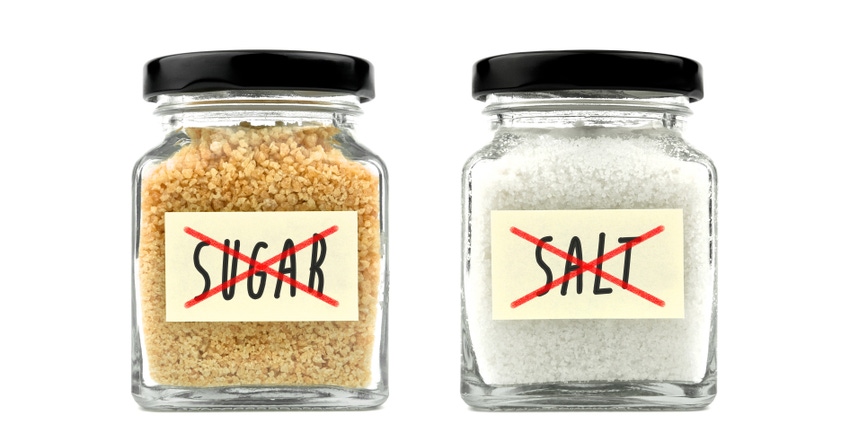The Centers for Disease Control and Prevention (CDC) calls sodium reduction a national priority because of its association with high blood pressure and cardiovascular disease. Similarly, the agency targets added sugars because they can lead to obesity, type 2 diabetes and heart disease.

The Dietary Guidelines for Americans (DGAs), published by the U.S. Department for Health and Human Services and USDA, are updated every five years. It’s safe to say reducing sodium and sugar consumption will be given strong emphasis in the upcoming 2020-2025 guidelines currently under review. The Centers for Disease Control and Prevention (CDC) calls sodium reduction a national priority because of its association with high blood pressure and cardiovascular disease. Similarly, the agency targets added sugars because they can lead to obesity, type 2 diabetes and heart disease.
The onus is on industry to formulate foods and beverages with lower sodium and sugar content while still meeting consumers’ expectations for flavor.
There are some important regulatory moves expected from FDA that may move the needle in favor of lower-sodium foods. “For instance, FDA is expected to finalize a draft guideline before the end of this year that establishes voluntary sodium reduction targets across 150 categories in food manufacturing and foodservice,” said Janice Johnson, Ph.D., food science lead, Cargill Salt.
At the same time, consumers are expressing awareness of the link between sodium and health. The 2019 U.S. Trend Study from HealthFocus International found 50% of consumers are very or extremely concerned about their sodium, and 49% say low-sodium statements on food packages are very or extremely important in their purchasing decisions.
Besides flavor, salt influences important product properties such as texture, color and shelf life. “When considering a sodium reduction in meat or dairy products by just taking salt out of the formulation, the manufacturer might need to take other additives into account to avoid negative impacts on texture or color or shelf life of the product,” said Diana Fast, junior product manager specialties, Jungbunzlauer.
Consumers are also focusing on reducing sugar consumption for obvious health reasons, even as certain diets place greater emphasis on the move. “Keto, Low Carb, Whole30 and Paleo all call for reducing or eliminating sugar,” said Thom King, president, Icon Foods. “These are trends that continue to grow as sugar is villainized in the press. Interestingly, keto has been in the top ten of most searched keywords for the past two years.”
But it’s not just sugar in consumers’ crosshairs. “Clean label concerns are also impacting purchase decisions,” said Andy Ohmes, global director, High Intensity Sweeteners, Cargill. “Consumers prefer products made with simple, recognizable ingredients, a reality that extends to sweetener choices.”
In many consumers’ minds, sucralose, aspartame and Ace-K muddy the ingredient statement. Replacing these artificial sweeteners can be simple, but not easy. “Since these are chemically-produced, they are much, much cheaper than natural high-intensity sweeteners,” said King. “Additionally, natural high-intensity sweeteners such as stevia and monk fruit can have off-notes that can turn consumers off.”
However, improvements in technology are producing cleaner tasting sweeteners. Technologists are gaining greater understanding to maximize their potential while limiting barriers to untarnished flavor.
To read this article in full, check out Food & Beverage Insider's digital magazine.
About the Author(s)
You May Also Like






